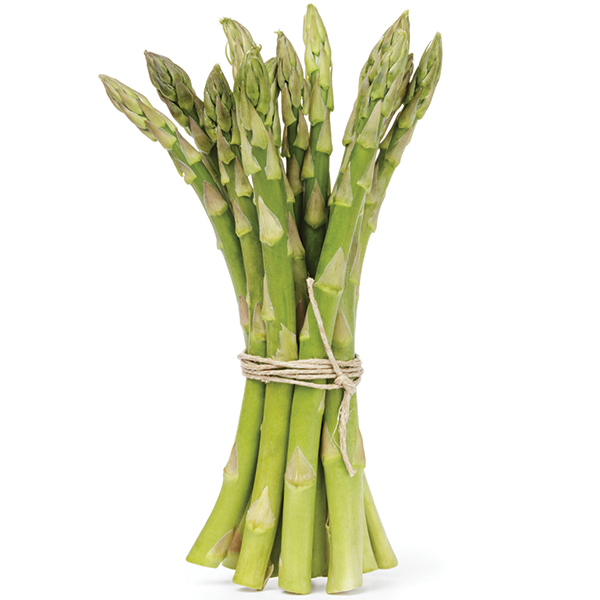
Organic asparagus makes up a small percentage of all organic produce sales. Offer organic asparagus during the spring months, which is the peak season for sales, in addition to conventional product.
Use organic asparagus to move other organic items like organic cheese, olive oil, butter or lemons. Run promotions on several items and offer recipe options that include all the promotional ingredients.
Spring is prime season for asparagus. Promote organic asparagus as a healthy, tasty side dish for both Easter and Mother’s Day. Don’t miss out on summertime grilling promotions. Organic asparagus is tasty when seasoned and grilled.
Organic asparagus will appeal to consumers who are looking to feed their families with sustainably grown options. Invite those shoppers to purchase organic asparagus by offering information on where and how the organic asparagus is grown.
Display asparagus bundles in an area where they will be kept moist but not overly wet. If they sit in too much water, they will begin to rot. Asparagus can be displayed in bundles or bags.
Place asparagus next to brighter-colored vegetables that pair well with asparagus for a meal. Consider placing asparagus next to red potatoes, eggplant or carrots. Create an organic cooking vegetables display to let your organic shoppers get everything they need in one place.
Consider creating an organic stir-fry display that groups asparagus and other stir-fry vegetables, such as broccoli. To reach the time-strapped consumer, chop up several organic vegetables used in stir-fry and offer them as a custom organic stir-fry mix.
Shipping
Organic asparagus is most often shipped in 11-pound cartons.
Grades
United States
U.S. No. 1
U.S. No. 2
Washington
Washington XF (extra fancy)
California stalk diameters
Small – 3⁄16 inches and larger
Standard – 5⁄16 inches and larger
Large – 7⁄16 inches and larger
Extra large – 10⁄16 inches and larger
Jumbo – 13⁄16 inches and larger
Colossal – 1 inch and larger
Handling
Temperature: 37 to 41 F, 2.8 to 5 C
Relative humidity: 95-100%
Mist: Lightly
Typical shelf life: 10 to 21 days
Highly sensitive to freezing injury.
Asparagus seldom is stored for more than 10 days. If product is to be held more than 10 days, store at 35 F to avoid low-temperature chilling injury.
Fresh asparagus deteriorates rapidly when low temperatures are not maintained. At room temperature, it quickly develops a woody tissue and loses sugar content.
Good-quality asparagus will be fresh and firm with closed, compact tips and good green color.